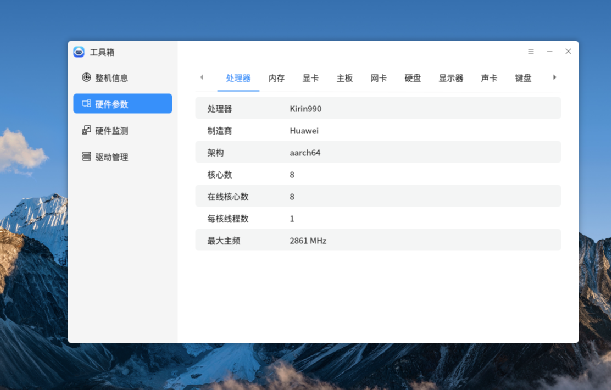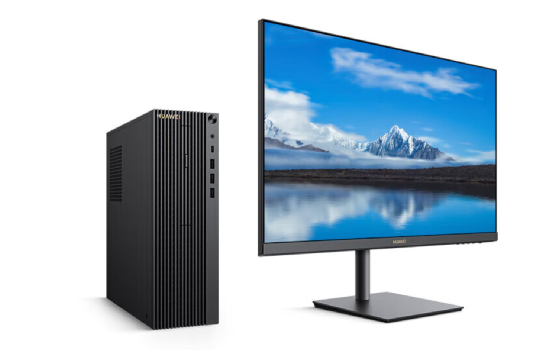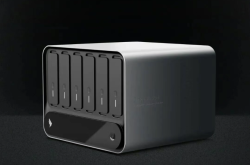Information and Innovation Industry is Heating Up Again
![]() 11/11 2024
11/11 2024
![]() 642
642
As of last Friday, the Information and Innovation Concept stocks have been repeatedly active, with China Software recording three gains in four days, China Great Wall and Inspur Information both hitting their daily limit, and Zhongfu Information surging over 10%.
According to some securities firms, the development of the Information and Innovation Industry has now entered the comprehensive implementation stage of the 2.0 era, with the acceleration of industry-specific Information and Innovation initiatives gradually forming a dual-wheel engine with party and government Information and Innovation. Against the backdrop of gradually easing local government budgets and continuous policy guidance, the Information and Innovation Industry is expected to embark on a new peak of construction in accordance with policy requirements.
Not long ago, Xingkong Jun and the Huawei team were experimenting with Information and Innovation computers. Now, commonly used tools such as WPS, DingTalk, the new version of WeChat (which was criticized last year), Sogou Input Method, 360 Browser, and SAPGui show no difference in experience compared to their Windows versions, running smoothly and seamlessly.
For the vast majority of office operations, these software applications cover most common scenarios.
However, there are still some specific applications, such as the need for the finance department to scan documents, the security department to access video surveillance, and the office archives to be compatible with ancient browsers and IE plugins. Huawei's team has developed a cloud-based virtualization solution, where a shortcut is placed on the Information and Innovation PC. Clicking on it actually executes x86 operations in the cloud, and the experience is even smoother than local operations.
For extreme users with special needs that cannot be met, Zhaoxin also provides Windows solutions.
It can be said that the current Information and Innovation computers have covered all office scenarios. Investors should note that a surge in orders for Information and Innovation computers is expected in the second half of this year.
Apart from Zhaoxin, most Information and Innovation computers use ARM-architecture CPUs produced by Flytech or Huawei.
While working on these tasks, Xingkong Jun has been pondering over a question: What does 'self-controllable' mean?
For example, does a lithography machine have to be entirely made in China, down to every screw, to be considered self-controllable?
Or, is it considered self-controllable as long as the production process, from photoresist to special gases to etchers to wafers, can ensure supply and achieve mass production?
Xingkong Jun tends to agree with the latter viewpoint.
In the accounting system established in the West, there is an important principle called 'substance over form.' We can observe that major decisions made in important economic fields in Europe and the United States all adhere to the principle of 'substance over form.' It is only when misleading voters that the form is emphasized, engaging in the politically correct procedures of LGBT.
China's accounting standards converge with Western accounting standards. Xingkong Jun believes that self-control should also follow the principle of 'substance over form.'
Therefore, when mass-produced 7nm (or 5nm, as some say; process technology is like the virtual displacement of a car) chips hit the market on a large scale, we can consider the lithography machines for this process technology to be self-controllable.
Recommended reading: an article Xingkong Jun wrote last year, 'Information and Innovation Computers, Heating Up Again.'
Xingkong Jun received the first batch of Information and Innovation computers allocated by the company.

This is a Huawei-produced machine with a Kirin 990 CPU and an aarch64 architecture (based on ARM).
However, oddly enough, the hard drive is from Western Digital...

The operating system is Kylin. From the application perspective, commonly used software such as WPS, DingTalk, and 360 Browser runs very smoothly, with almost no difference in experience compared to Windows. Especially the enterprise version of WPS (which is vastly different from the personal version), the experience is almost superior to that of Office.
Due to the smooth progress of the company's system migration to the cloud in recent years, most software is deployed on browsers in the cloud, basically eliminating the need for local installations.
The exception is WeChat.
In the Kylin app store, WeChat has a rating of 2.1 out of 5, with over a million downloads.
Some users have commented, thanking Tencent for bringing them back to the WeChat interface of 10 years ago.
In other words, whether it's hardware or the operating system, Information and Innovation computers are capable of supporting daily applications, but software optimization is crucial.
Manufacturers who prioritize this have created an experience almost identical to Windows. Those who do not prioritize it have created something with a 2.1 rating, leaving users feeling helpless.
Since the Kirin 990 is based on the ARM architecture and natively supports Android, an Android emulator was installed to facilitate the use of WeChat.
After a week of use, Xingkong Jun has several reflections.
First, there are no obstacles to basic office work (official documents, BS version systems). Even high-intensity typing and web browsing pose no problems.
Second, if a company's system is not fully migrated to the cloud, installing clients can be cumbersome.
Third, the compatibility of commonly used social media apps is very important. In this regard, DingTalk is much better than WeChat, with 80% of complaints coming from the poor WeChat experience.
Judging from usage, the next step for all enterprises is to migrate all information systems and even industrial IoT to the cloud as much as possible, which is the general trend.
Cloud migration means not relying excessively on specific chip architectures. Systems like UFIDA Cloud and Kingdee Cloud can run on both x86 platforms and fully self-controllable ARM platforms. With the continuous development of the open-source chip architecture RISC-V platform, running on the RISC-V architecture in the future will not pose any difficulty and requires almost no complex adaptation or migration.
Why was Wang Jian from Alibaba Cloud selected as an academician of the Chinese Academy of Engineering?
Personally, Alibaba Cloud is Ma Yun's most successful product, hands down, worthy of being recorded in history.
The success of Alibaba Cloud proves that a comprehensive move away from IOE is feasible and can even surpass competitors.
After achieving success on the same path, various cloud services such as Huawei Cloud and Tencent Cloud emerged, all riding on the shoulders of Alibaba Cloud.
So, how to invest in the Information and Innovation sector?
Xingkong Jun breaks down the Information and Innovation industry chain into six major parts and discusses them one by one.
Of course, this is Xingkong Jun's personal understanding, and the classification criteria are open to discussion.
The first part, undoubtedly the core, is chips.
In the x86 segment, Hygon has already been listed on the STAR Market, and Zhaoxin can also barely compete.
In the ARM segment, the Flytech industry chain is very mature, and Huawei's Kunpeng series has also achieved scale in the server field. During Xingkong Jun's research, it was found that central enterprises, including operators, have already begun to fully switch to the ARM platform.
In the RISC-V segment, there is a variety of developments. Chinese enterprises ship billions of RISC-V architecture chips annually, but most are used in relatively low-end IoT fields. Alibaba is promoting the application of RISC-V in PCs and servers, but it will take some time.
In other architectures, Loongson is a formidable player.
The second part is hardware and networking equipment.
In this area, Chinese enterprises have risen to the world's first tier, whether it's servers or networking equipment, including Huawei, ZTE, Inspur, Sugon, H3C (affiliated with ZTE), and others.
The third part is operating systems and databases.
Currently, all domestic operating systems are mainly based on secondary development of open-source Linux. Some people believe that this does not constitute true self-control.
Xingkong Jun provides an example: Microsoft once collaborated with Nokia to develop the Windows Phone operating system, which was eventually crushed by the combined forces of Android and iOS. Is it because Microsoft lacks the ability to develop an operating system? No, it's because of the lack of an ecosystem. Developing an operating system is not difficult; what's difficult is building an ecosystem. The Linux ecosystem is very rich, so there's no need to reinvent the wheel.
In terms of databases, Alibaba and Tencent both have corresponding top-tier commercial products that are not inferior to Oracle. Applications on the scale of Singles' Day are all supported by domestic databases, demonstrating their strength. In addition, domestic databases such as Dameng and Kingbase are also very rich.
The fourth part is application platforms.
This segment mainly includes ERP and other applications. Domestically, well-known players include UFIDA, Kingdee, and Inspur. However, as mentioned above, this market is vast, and many enterprises have the opportunity to share the pie.
The fifth part is software.
Represented by Kingsoft Office, multiple software enterprises have been listed on the STAR Market. Additionally, many industry-specific software enterprises are quietly making a fortune in their respective niche markets, especially those providing services to operators, the three major oil companies, the power industry, highways, tobacco, coal mines, and other industries.
The sixth part is system security.
Companies such as Qi'anxin, 360, and Venustech, including those that make hardware firewalls and provide software security protection, are all very important.
Xingkong Jun believes that the information war has already begun, and enterprises in the system security field will continue to grow stronger and stronger.




